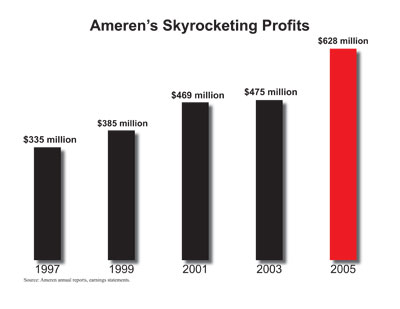From the New York Times:
Gov. Rick Perry of Texas is asking the Environmental Protection Agency to temporarily waive regulations requiring the oil industry to blend ever-increasing amounts of ethanol into gasoline. A decision is expected in the next few weeks. […]
His request for an emergency waiver cutting the ethanol mandate to 4.5 billion gallons, from the 9 billion gallons required this year and the 10.5 billion required in 2009, is backed by a coalition of food, livestock and environmental groups.
Farmers and ethanol and other biofuel producers are lobbying to keep the existing mandates.
And from Reuters:
The U.S. Environmental Protection Agency said on Tuesday it will not meet a July 24 deadline for ruling on Texas’ request that the government reduce the federal mandate on how much ethanol must be blended into gasoline this year.
“Rather, additional time is needed to allow staff to adequately respond to the public comments and develop a decision document that explains the technical, economic and legal rationale of our decision,” said EPA Administrator Stephen Johnson, who added he now expects a final decision on the Texas waiver request in early August.
Congressional candidates Colleen Callahan (D) and Aaron Schock (R) oppose cutting ethanol production or subsidies. Candidate Sheldon Schafer (Green Party) has a different view. The Journal Star quoted the candidates in June:
“Ending the federal incentives for corn growers would completely destroy an emerging industry that has repositioned itself to meet the world’s growing demand for renewable alterative energy sources,” said Democratic candidate Colleen Callahan. “That’s just a slap in the face to Middle America and particularly the farmers in Illinois and other corn-growing states.”
[…] Steve Shearer, Schock’s campaign manager, said he believes ethanol and bio-fuels are one vital component of increased energy independence.
[…] Green Party 18th candidate Sheldon Schafer argues corn-based ethanol isn’t as efficient as cellulose-based and switchgrass-based ethanol, the latter from a fast-growing variety of prairie grass, which he said have higher energy yields. “We should be looking at the highest efficiencies. Corn-based isn’t giving us those efficiencies,” Schafer said.
While the Grocery Manufacturers Association (GMA) blames corn-based ethanol for rising food prices, others dispute this claim. GMA hired a PR firm to change public perception of ethanol by linking ethanol production to higher food prices. But experts, such as U.S. Secretary of Agriculture Ed Schafer, say those claims are overstated:
About six weeks ago, US Department of Agriculture researchers analyzed the problem and reported that rising energy costs, decreased crop production around the world because of bad weather and increased worldwide consumption were among the factors contributing to higher food costs.
“That analysis found that ethanol and the increased use worldwide of other biofuels were both contributing factors but not major ones,” Mr Schafer said.
“The USDA shared its report with Congress and invited board members of the Grocery Manufacturers Association — which has been critical of ethanol’s impact on food prices — to discuss the findings. He said those invitations were declined.
“The grocers are targeting ethanol because they think they can change ethanol policy more easily than larger energy policy.
Whether or not ethanol leads to higher food prices, the bigger question is whether ethanol is a sufficient strategy for energy independence. That’s still up for debate.

 We need to level the playing field and eliminate mandates, subsidies, tariffs and price supports that focus exclusively on corn-based ethanol and prevent the development of market-based solutions which would provide us with better options for our fuel needs.
We need to level the playing field and eliminate mandates, subsidies, tariffs and price supports that focus exclusively on corn-based ethanol and prevent the development of market-based solutions which would provide us with better options for our fuel needs.
 After budget-busting increases in natural gas last winter, now we get to see the other half of our CILCO bills go through the roof.
After budget-busting increases in natural gas last winter, now we get to see the other half of our CILCO bills go through the roof.